
Casa Vicens is a modernist building situated in the Gràcia neighbourhood of Barcelona. It is the work of architect Antoni Gaudí and is considered to be his first major project. It was built between 1883 and 1885, although Gaudí drew up the initial plans between 1878 and 1880. The work belongs to the orientalist style, similar to Neo-Mudéjar architecture, although interpreted in Gaudí’s own personal way, with a uniqueness that only he knew how to add to his projects. In this work, and for the first time, Gaudí outlined some of his constructive resources that would become regular features throughout the emergence of Modernisme. The work was widely discussed when it was built and caused a great sensation among the general public at the time. When the building was constructed, Gràcia was still an independent urban nucleus of Barcelona; it had its own council and was classified as a town, though nowadays it is a district of the city.

Francisco Ayala García-Duarte was a Spanish writer, the last representative of the Generation of '27.
Spanish comics are the comics of Spain. Comics in Spain are usually called historietas or cómics, with tebeos primarily denoting the magazines containing the medium. Tebeo is a phonetic adaptation of TBO, a long-running (1917–1983) Spanish comic magazine, and sounds like "te veo".
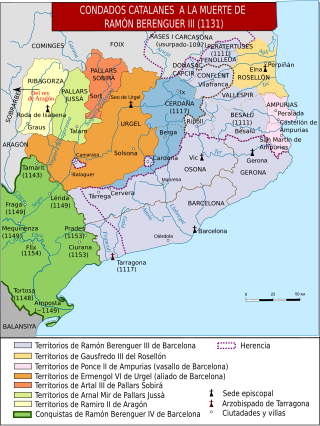
Ermengol or Armengol VI, called el de Castilla, was the Count of Urgell from 1102 until his death. He was the son and successor of Ermengol V and María Pérez, daughter of Count Pedro Ansúrez, Lord of Valladolid, who became the young Ermengol's tutor when he was orphaned in 1102.
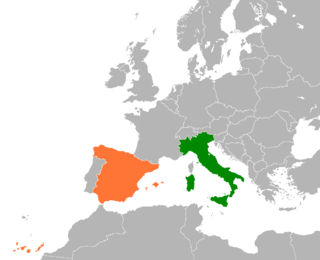
Italy–Spain relations are the interstate relations between Italy and Spain. Both countries established diplomatic relations some time after the unification of Italy in 1860.

A traditional Spanish garden is a style of garden or designed landscape developed in historic Spain. Especially in the USA, the term tends to be used of a garden design style with a formal arrangement that evokes, usually not very precisely, the sort of plan and planting developed in southern Spain, incorporating principles and elements from precedents in ancient Persian gardens, Roman gardens and Islamic gardens, and the great Moorish gardens of the Al-Andalus era on the Iberian Peninsula.

Antoni Gaudí i Cornet was a Catalan architect and designer from Spain, known as the greatest exponent of Catalan Modernism. Gaudí's works have a highly individualized, sui generis style. Most are located in Barcelona, including his main work, the church of the Sagrada Família.

Paloma Navares is an interdisciplinary Spanish artist who combines sculpture, photography, video and audio in her installations. Recurring themes in her work are the feminine condition, the historical representation of women through art, the critical analysis of the canon, madness, beauty and aging.
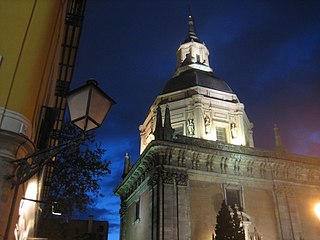
The Church of San Andrés is a church in Madrid, Spain. It was declared a Bien de Interés Cultural in 1995.

The so-called Pavellons Güell, or Güell Pavilions, is a complex of buildings in the neighborhood of Pedralbes, Barcelona, by the Catalan Modernist architect Antoni Gaudí, built between 1884 and 1887.

The Order of Saint Mary of Spain, also known as the Order of the Star, was a Spanish military order concentrating in naval activity created by Alfonso X of Castile, King of León and Castile in 1270.
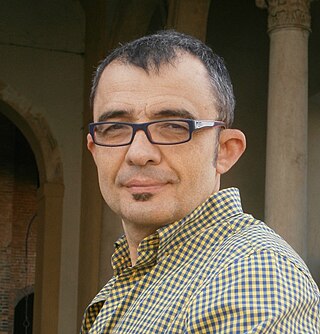
Juan Vicente Aliaga is a Spanish art critic who has written widely on contemporary conceptual art as well as on gender and queer theory. In his pioneer 1997 book Identidad y diferencia: sobre la cultura gay en España, co-authored with José Miguel G. Cortés, he expressed criticism of the assimilationist strategies of mainstream LGBT+ associations in Spain, advocating instead for a politics of difference and the reappropriation of slurs like "marica" and "maricón", similarly to what happened with "queer" in English-speaking countries.
The architecture of Barcelona has undergone a parallel evolution alongside Catalan and Spanish architecture, reflecting the diverse trends found in the history of Western architecture. Throughout its historical development, Barcelona has been influenced by numerous cultures and civilizations, each contributing their artistic concepts and leaving a lasting legacy. The city's architectural heritage can be traced back to its earliest inhabitants, the Iberian settlers, followed by the Romans, Visigoths, and a brief Islamic period. In the Middle Ages, Catalan art, language, and culture flourished, with the Romanesque and Gothic periods particularly fostering artistic growth in the region.
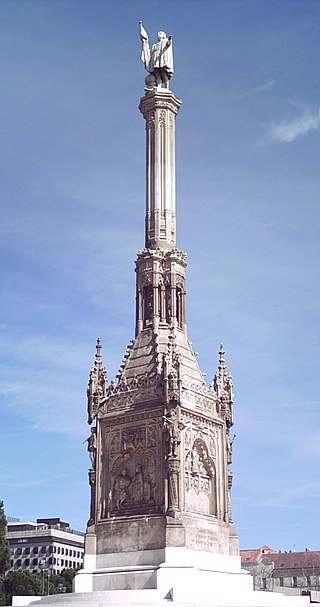
The Monument to Columbus is a monument in Madrid, Spain. It lies on the namesake square, the Plaza de Colón. The basement of the monument is a Gothic revival work by Arturo Mélida while the topping statue is a work by Jerónimo Suñol.

Margarita of Spain was an infanta of Spain, who died in childhood.
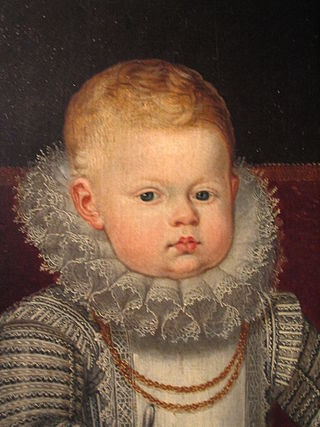
Alonso of Spain was an infante of Spain, who died in childhood.

Our Lady of the Rosary is an oil on canvas painting of Our Lady of the Rosary by Bartolomé Esteban Murillo, created c. 1650-1655. It was previously in the El Escorial Monastery and Palacio Real de Madrid and now is held in the Museo del Prado, in Madrid.

The parks and gardens of Barcelona cover an area of 2,784 hectares. Its management depends on the Municipal Institute of Parks and Gardens of Barcelona, a body under the Barcelona City Council. Since the 19th century —and especially in the 20th century— Barcelona has been committed to the development of green areas in the city, and is currently one of the European cities with the most roadside trees. In 2001 the Institute of Parks and Gardens received ISO 14001 certification for the conservation and management of green spaces and public roadside trees.


















